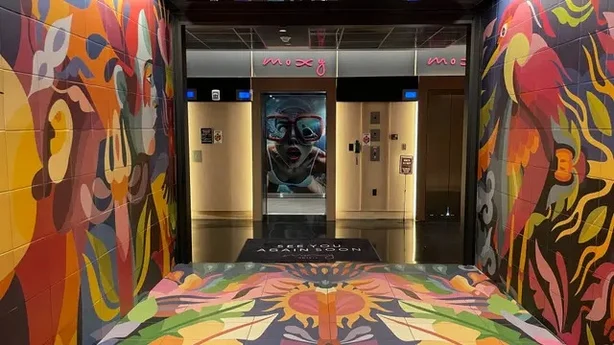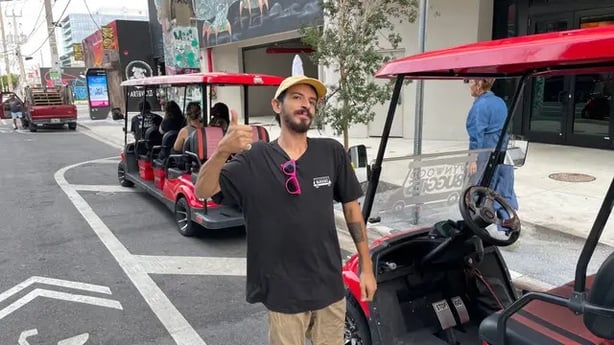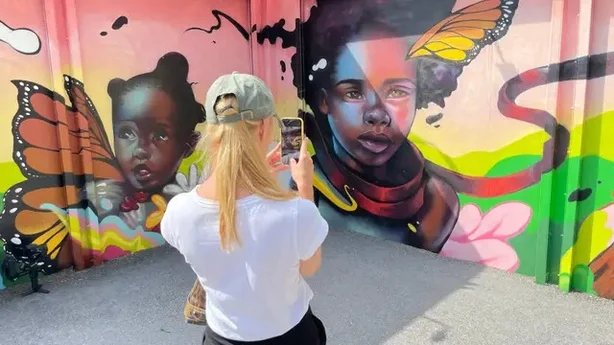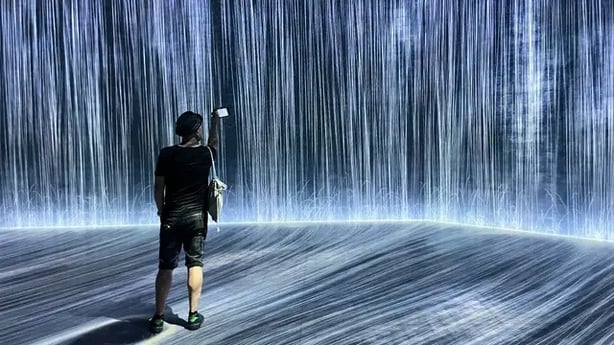Nov 26,2024

The city offers an impressive range of modern art museums as well as ballet, opera and concert halls, says Ben Mitchell.
"Hey, you better look after your eyes, they gonna see so many things, they’re going to hurt," Rafael, my Cuban-born driver tells me as he takes me on the short drive from Miami International Airport to Wynwood.
This trendy district of the Florida city has become famous for its graffiti and street art, independent shops and a growing range of restaurants.
But Rafael tells me the low-rise streets of Wynwood were not always so welcoming. "Back in the Nineties this area was where all the drug dealers used to be, there was no way you would come here – nowadays the traffic is bad because it’s so popular."

He drops me off at the Moxy Miami Wynwood, a newly opened hotel at the centre of the district which is as vibrant as the streets surrounding it.
The entrance is through a hall decorated in a kaleidoscope of colours before you take the lift to reception situated at the bar, which doubles as a lounge and games room with foosball (table football), Jenga and a giant shuffleboard table available to keep you entertained.
The decor of my room is equally playful with graffiti motifs covering the bathroom door and unlikely touches such as a grey-and-orange retro telephone.

Embarking on a tour of the district to learn about the street art with Wynwood Buggies, my guide and "philosopher" Marco drives us in the six-seater golf cart for just a few metres before he stops to point out a giant mural on the side of the building.
The painting is of a woman swimming among sharks by The Amazing Ske – the same woman who is depicted looking pretty shocked in the hotel's lift.
Marco tells us that the gentrification of the area, which is seven streets by nine streets wide, began in 2009 when developers started buying up properties, having realised the combined potential of the graffiti-covered buildings and the prime location near to the airport, Downtown and Miami Beach.
"Sure, there was the gangs and Pablo Escobar controlling kilos of cocaine," he says. "At the same time there were a lot of kids in the streets and they wanted to experience life in a way they could have fun and they started writing on the walls, like every kid writes on the walls of its own room, and this is what is known today as graffiti."

We finish at the Wynwood Walls, an exhibition space that preserves some of the area's original and greatest works while also pioneering high-tech development of the genre through the use of augmented reality, which literally brings the artworks to life by producing moving images through your mobile phone.
The next evening, I head to the Ziff Ballet Opera House at the Adrienne Arsht Center – one of the largest performing arts centres in the USA – to experience the other extreme of the arts spectrum, a production by the Miami City Ballet of George Balanchine’s A Midsummer Night’s Dream.

The resident company has made the story its own by transporting it from the woodland outside of Athens in Shakespeare's original tale to the Florida seas, with fairies replaced by seahorses and Bottom given the indignity of a manatee’s head rather than a donkey’s.
But it is the flutter of the dancers’ feet as they float on pointe across the stage that captivates me. I’m repeatedly astounded by their strength and subtlety.
The next day I move hotels to the citizenM South Beach, which is a 20-minute walk to the city’s famous sandy beach.

It has a similar playful and colourful vibe as the Moxy but with the addition of a swimming pool on the roof and a full breakfast bar.
As I enter my room, I get the sense of being in a futuristic cabin with the blinds, TV, air con and even the colour of the lighting all controlled by a bedside iPad.
A short walk along the Lincoln Road shopping district, which is lined with Art Deco buildings including the former Lincoln Theatre – now a branch of H&M, takes me to the New World Center – a Frank Gehry-designed concert hall and home to the New World Symphony (orchestra) which was opened in 2011 and is a piece of art in itself.

As I stand in the giant lobby, my eyes follow the curves of the staircases and balconies as they fold in on each other up to the ceiling.
I am here to watch an opera double-bill of Viktor Ullmann’s The Kaiser Of Atlantis with libretto by Peter Kien and Kurt Weill’s The Seven Deadly Sins with libretto by Bertolt Brecht.
The dystopian fable by Ullmann is told with humour and humanity with the help of puppets manipulated by the cast and projected on to large screens.
The modern presentation style is intentional, I learn from the New World Symphony’s director of communications Marci Falvey, who explains that the orchestra is motivated by bringing new audiences to classical music and opera.

This includes the live productions being projected on to a 7,000 square foot external wall with state-of-the-art speakers for the public to bring along their camping chairs and enjoy the shows for free and without a ticket.
This feeling of art for everyone stays with me as I walk around the Design District the next day – a shopping area home to high-end brands from Gucci to Tiffany’s, where the shop fronts are designed to be as eye-catching and exuberant as the products on sale inside.

The pedestrianised district is peppered with works of art including a bus stop where the sole occupant is a skeleton who has clearly waited for his bus too long.
My next stop is to Superblue, one of the most interactive of the many modern and contemporary art museums of Miami, which uses video and computer installations to make art fun and accessible to all ages.

I step into a large darkened hall for the teamLab installation which involves projections of water streaming down the walls and flowers growing up, which you can influence by rubbing on the walls and ceilings.
The next exhibition by Rafael Lozano-Hemmer has thousands of lightbulbs strung from the ceiling connected to a sensor which reads your pulse, before transferring the rate to a single bulb.
I give it a try and the sound of my heart beating fills the hall until my place is taken by a toddler and suddenly the heartbeat and flashing bulbs speed up to an impressive pace.

The final exhibit is the Es Devlin mirror maze which, with its infinite reflections and seemingly endless twists and turns, makes me feel as young and bewildered as some of the children racing through, pulling faces in the reflections.
My last taste of Miami is actually of Cuba, thanks to my guide Mirka, of Miami Culinary Tours, who shows me the authentic eateries of Little Havana, from the empanadas – "dough is happiness sealed", to the peanut seller – "$1 for happiness".

Along the way, Mirka points out the domino park for older residents to enjoy the game that they brought with them from Cuba, but with the addition of some very local Miami rules which ban the carrying of firearms or weapons, spitting and shouting, or playing without a shirt.
I head to the airport with a stomach full of Cuban pastries and the sense that in Miami, culture – and art – is overflowing on to the streets and just waiting to be experienced.
How to plan your trip
Doubles at citizenM Miami South Beach (citizenm.com) start from $125 per night, room only.
Doubles at Moxy Winwood (marriott.com) start from from $199 per night, room only.
For more details about the destination, visit MiamiandMiamiBeach.com.
.svg)
